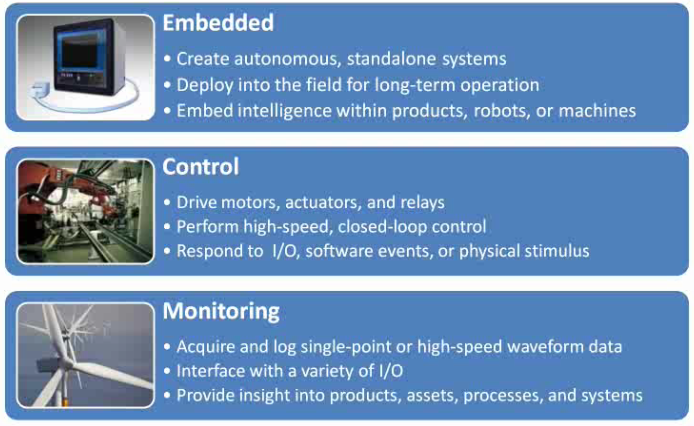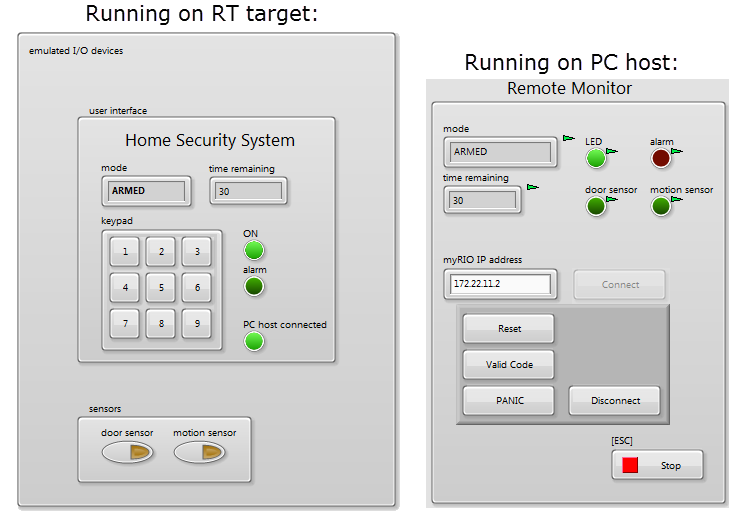RIO Developer Essentials Guide for Academia
"ECM" tag
NI RIO
RIO guide
Introduction to the NI RIO platform.
"Embedded Control and Monitoring" video
RIO guide
This 3-minute video from NI introduces the basic ideas behind embedded control and monitoring (ECM) with the NI reconfigurable I/O (RIO) hardware and software platform which includes the Academic RIO Device products.
A standard software architecture that lends itself to a wide variety of system controller designs that require a PC-based user interface.
Queued state machine
RT code
State machines perform system control, data processing, and any task that involves executing a sequence of activities in response to inputs from the surrounding physical system, the user interface, and other processes within the system. The queued state machine is a particular implementation style that is flexible and versatile, easy to maintain, and computationally efficient.
The queued message handler contains multiple process loops operating independently and in parallel that communicate with each other by sending messages through queues. Each process is a well-defined task implemented by the "Queued State Machine" design pattern. Breaking up the system into self-contained tasks greatly simplifies the design of complex systems.
System controller application example: Home Security System
RT code PC code
Example of a complete RT system controller based on the Queued Message Handler (QMH) design pattern with multiple parallel task loops implementing behaviors with queued state machines (QSMs), various inter-process communication techniques (queues and local variables), and inter-target communication techniques (network-published shared variables (NPSVs) and network streams). The PC host human-machine interface (HMI) can remotely connect to the system through the network, monitor the status of the security system, and control it remotely.
Create a responsive user interface based on two loops operating in parallel: the "producer" loop event structure responds immediately to user interactions such as button clicks and mouse movements that send commands through a queue to the "consumer" loop which performs the required tasks. Separating the state machine into two loops allows the user interface to remain responsive should a consumer task require an unusual amount of time or must wait for a shared resource to become available.






